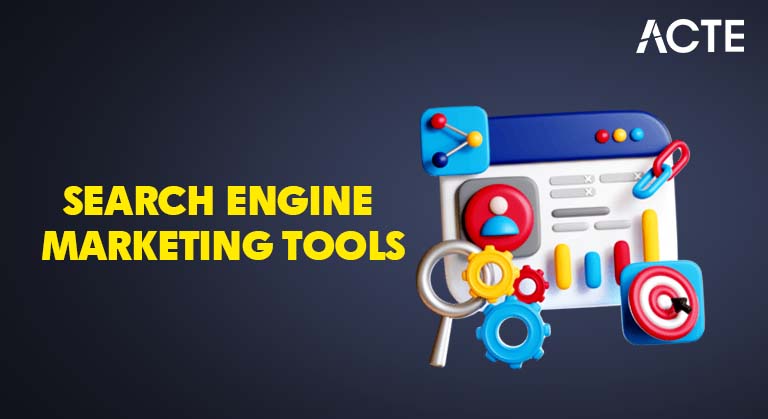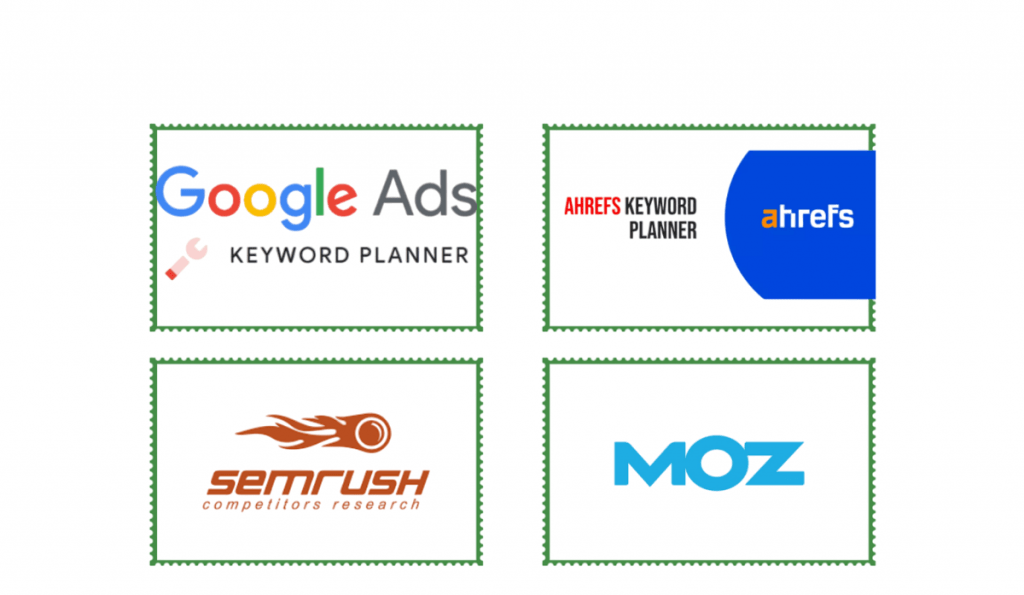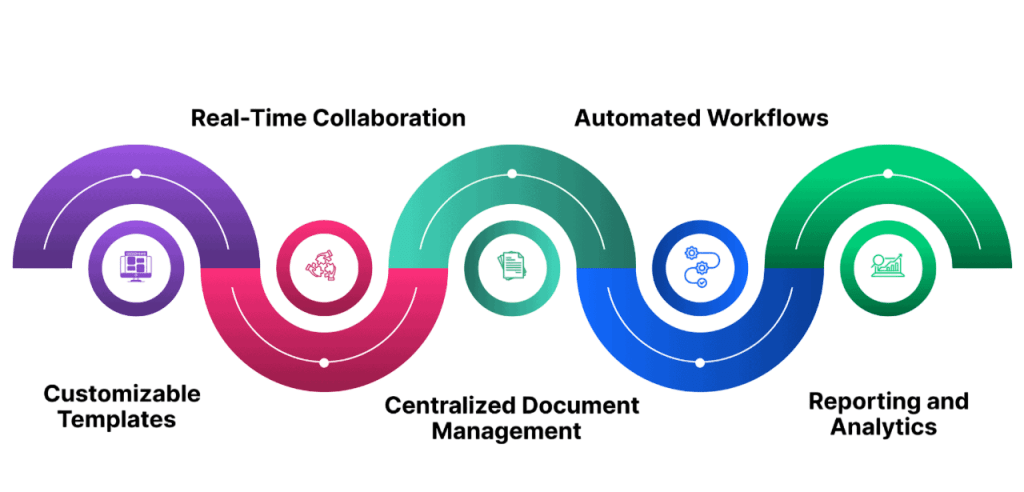
- What is SEM?
- SEM vs SEO
- Google Ads Overview
- Keyword Planning Tools
- Ad Copy Generators
- Bid Management Platforms
- Analytics and Reporting Tools
- Automation Tools
- Conclusion
What is SEM?
Search Engine Marketing (SEM) refers to the use of paid advertising strategies to appear prominently in search engine results. Unlike Search Engine Optimization (SEO), which focuses on organic rankings, SEM involves paying for ad placements that are displayed when users search for relevant terms. These ads can appear at the top or bottom of the search engine results page. SEM is highly measurable and can yield immediate results when executed effectively. It includes campaign planning, ad creation, bidding on keywords, and continuous performance optimization. SEM is crucial for gaining visibility, driving targeted traffic, and achieving specific marketing goals.Search Engine Marketing (SEM) is a digital marketing strategy focused on increasing a website’s visibility in search engine results pages (SERPs) through paid advertising. Unlike Search Engine Optimization (SEO), which aims for organic rankings, SEM involves using platforms like Google Ads or Bing Ads to bid on keywords and display targeted ads to users actively searching for related products or services. These ads typically appear at the top or bottom of search results, marked as sponsored. SEM allows businesses to reach their target audience quickly, control their budget, and measure campaign performance in real time. It’s a powerful way to drive qualified traffic, generate leads, and achieve specific marketing goals with precision and speed.Search Engine Marketing (SEM) has become a vital strategy for businesses aiming to capture the attention of online users through paid advertisements on search engines. It involves placing targeted ads that appear on search engine result pages (SERPs) when users search for specific keywords. SEM is not just about placing ads; it’s about placing the right ads in front of the right audience at the right time. Effective SEM campaigns rely heavily on a variety of tools to optimize every aspect of the marketing process, from keyword planning to performance analysis. These tools help marketers maximize their return on investment (ROI), improve ad relevance, Digital Marketing Training and stay ahead of competitors.Search Engine Marketing (SEM) tools play a vital role in helping businesses plan, execute, and optimize their paid search campaigns.
Ready to Get Certified in Digital Marketing? Explore the Program Now Digital Marketing Online Training Offered By ACTE Right Now!
SEM vs SEO
- SEO: Drives organic (unpaid) traffic.
- SEM: Drives paid traffic through ads.
- SEO: Free clicks, Inbound Marketing but requires time and resources.
- SEM: Pay-per-click (PPC); costs vary based on competition.
- SEO: Takes time to see results (weeks or months).
- SEM: Delivers immediate visibility once ads are live.
- SEO: Offers long-term, sustainable traffic.
- SEM: Traffic stops when the ad budget runs out.
- SEO: Appears below ads in search results.
- SEM: Appears at the top or bottom of search results, marked as “sponsored.”
- SEO: Often has higher CTR for informational searches.
- SEM: Can have higher CTR for commercial or high-intent queries.
- SEO: Testing changes takes time to reflect in rankings.
- SEM: Allows quick A/B testing of ads, keywords, and landing pages.
- SEO: Building authority and long-term growth.
- SEM: Quick results, promotions, or targeting competitive keywords.
Traffic Source
Cost
Speed of Results
Longevity
Placement in SERPs
Click-Through Rate (CTR)
Testing & Optimization
Best For
Google Ads Overview
- Pay-Per-Click (PPC) Model: Advertisers pay only when users click on their ads.
- Keyword Targeting: Ads are shown based on specific keywords users search for on Google.
- Ad Formats: Includes Search Ads, Display Ads, Display Advertising,Shopping Ads, Video Ads (YouTube), and App Ads.
- Audience Targeting: Allows targeting by demographics, location, interests, behavior, and device type.
- Ad Auction System: Ads appear based on a combination of bid amount, ad quality, and relevance (Ad Rank).
- Budget Control: Set daily or campaign-level budgets to manage spend effectively.
- Performance Tracking: Offers detailed analytics on impressions, clicks, conversions, and ROI.
- Ad Extensions: Enhance ads with extra information like site links, call buttons, and location info.
- Remarketing: Re-engage users who have previously interacted with your website or app.
- Automated Campaigns: Use features like Smart Campaigns and Performance Max for automation and optimization.
- Quality Score: Google rates ads on relevance, expected CTR, and landing page experience, which affects cost and placement.
- AI-Powered Tools: Use artificial intelligence and natural language processing to generate ad copy quickly.
- Time-Saving: Speeds up the content creation process, reducing manual writing effort.
- Customizable Inputs: Generate tailored ads by entering details like product, Google’s Match Type Changes , audience, tone, and keywords.
- Multiple Variations: Provide different versions of headlines, descriptions, and CTAs for A/B testing.
- Platform-Specific Templates: Offer pre-built templates for Google Ads, Facebook Ads, LinkedIn, and more.
- Consistency and Scalability: Help maintain brand voice while scaling ad production across campaigns.
- Great for Small Teams: Ideal for marketers with limited time or resources.
- Popular Tools: Examples include Copy.ai, Jasper, Writesonic, and Anyword.
- Boosts Creativity: Offers inspiration and new ideas when facing writer’s block.
- Requires Human Oversight: Final edits are necessary to ensure quality, accuracy, and alignment with brand messaging.
- Data Collection: Track website traffic, user behavior, and campaign performance.
- Performance Metrics: Provide insights on clicks, impressions, conversions, bounce rates, and ROI.
- Real-Time Reporting: Offer up-to-date data to monitor campaign progress and make quick adjustments.
- Customizable Dashboards: Allow users to create tailored views for specific KPIs and goals.
- Integration: Connect with multiple platforms like Google Ads, Facebook Ads, CRM systems, and more.
- Audience Insights: Analyze demographics, interests, and behavior to refine targeting strategies.
- Goal Tracking: Set and monitor specific objectives like purchases, sign-ups, or downloads.
- Attribution Models: Help understand which channels or touchpoints contribute most to conversions.
- Automation: Enable scheduled reports and alerts for important performance changes.
- Popular Tools: Examples include Google Analytics, Video Marketing, Adobe Analytics, SEMrush, and HubSpot.
- Task Automation: Automate repetitive tasks like email campaigns, social media posting, and ad management.
- Workflow Management: Streamline marketing processes with automated workflows and triggers.
- Personalization: Deliver personalized content and offers based on user behavior and segmentation.
- Lead Nurturing: Automatically engage leads with timely follow-ups and drip campaigns.
- Performance Optimization: Use AI to adjust bids, budgets, and targeting for paid campaigns in real-time.
- Integration: Connect with CRM, analytics, and other marketing platforms for seamless data flow.
- Time and Cost Efficiency: Reduce manual work, freeing up resources for strategic tasks.
- Analytics and Reporting: Generate automated performance reports and insights.
- Examples: Popular tools include HubSpot, Marketo, Mailchimp, ActiveCampaign, and Zapier.
- Scalability: Helps businesses scale marketing efforts without proportional increases in workload.
To Explore Digital Marketing in Depth, Check Out Our Comprehensive Digital Marketing Training To Gain Insights From Our Experts!
Keyword Planning Tools
Keyword planning is the foundation of any SEM campaign. Tools like Google Keyword Planner, SEMrush, and Ubersuggest allow marketers to identify high-volume, low-competition keywords relevant to their business. These tools provide data on search volume, cost-per-click (CPC), competition level, and keyword trends. Effective keyword planning ensures that ad budgets are spent wisely and that the ads reach the intended audience. Keyword tools also help uncover long-tail keywords, which can be less competitive and more cost-effective.

Proper keyword selection improves ad relevance and quality scores, leading to better ad placements and reduced CPCs.Keyword planning tools are essential for building effective search engine marketing (SEM) and SEO strategies. These tools help marketers identify the right keywords to target based on search volume, competition level, and user intent. By understanding what potential customers are searching for, businesses can create more relevant ads, content, and landing pages that attract qualified traffic. Popular tools like Google Keyword Planner, Digital Marketing Training ,SEMrush, Ahrefs, and Ubersuggest allow users to discover new keyword opportunities, analyze trends, Reporting Tools and estimate the cost-per-click (CPC) for paid campaigns. Many tools also offer keyword grouping and filtering features to help refine strategy and focus on high-converting terms. Whether you’re launching a PPC campaign or optimizing content for organic search, keyword planning tools provide the data-driven insights needed to make informed decisions and improve overall campaign performance.
Ad Copy Generators
Looking to Master Digital Marketing? Discover the Digital Marketing Expert Masters Program Training Course Available at ACTE Now!
Bid Management Platforms
Effective bid management is crucial in SEM to ensure that advertisers get the most value for their investment. Platforms like WordStream, Kenshoo, and Marin Software help automate and optimize bidding strategies across various campaigns. These tools use historical performance data and predictive analytics to adjust bids in real time, ensuring optimal placement without overspending.Popular bid management platforms include Marin Software, WordStream, Benefits of being a Content Marketer and Adobe Advertising Cloud, all of which simplify campaign management at scale, save time, and improve overall efficiency. For businesses managing multiple campaigns or large advertising budgets, bid management platforms are invaluable in maintaining control and driving better results in competitive digital advertising environments.

Bid management tools can handle multiple ad accounts, track competitor activity, and provide actionable recommendations. Automated bidding strategies, such as Target CPA or Maximize Conversions in Google Ads, can also be implemented through these platforms for improved efficiency.Bid management platforms are specialized tools designed to help advertisers efficiently manage and optimize their pay-per-click (PPC) campaigns across multiple search engines and advertising networks. These platforms automate the bidding process by adjusting bids in real time based on factors such as keyword performance, budget constraints, and campaign goals. By leveraging machine learning and advanced algorithms, bid management tools aim to maximize return on investment (ROI) by allocating budget to the highest-performing keywords and ad placements. They provide detailed analytics and reporting features, allowing marketers to track campaign performance and make data-driven decisions.
Analytics and Reporting Tools
Automation Tools
Preparing for Digital Marketing Job Interviews? Have a Look at Our Blog on Digital Marketing Interview Questions and Answers To Ace Your Interview!
Conclusion
Search Engine Marketing (SEM) is a dynamic and data-driven discipline that requires a robust toolset to succeed. From keyword planning and ad creation to bidding, automation, and analytics, each stage of SEM benefits from specialized tools designed to enhance performance and efficiency. Whether you’re a small business owner or a digital marketing professional managing multiple campaigns, Digital Marketing Training leveraging the right SEM tools can significantly impact your marketing outcomes. As the digital landscape evolves, staying informed about the latest SEM tools and best practices will be crucial for maintaining a competitive edge and achieving long-term success.




